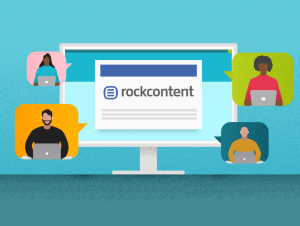When it comes to modern marketing principles, content marketing is one of the more reliable methods.
The basic gist is that a brand or company creates highly valuable content to appeal to a specific demographic.
The primary goal of this content is to drive traffic to landing pages and, ideally, convert leads into customers.
Recently, native advertising has slowly crept its way into sites and mainstream media.
Although native advertising wears the veneer of content marketing, it’s uniquely different.
So, to help alleviate any misunderstandings, let’s break down the differences between content marketing and native advertising once and for all.
- Goals and Objectives
- Reach and Targeting
- Formats and Channels
- Costs and Budgets
- Creation and Distribution
- Measuring and Analyzing the Success
- Building Brand Awareness
- Consumer Trust
- Future Trends
- Get Better Content for Your Marketing With WriterAccess!
Download this post by entering your email below
At first glance, both content marketing and native advertising seem remarkably alike. In most cases, they follow similar structures:
- The content is valuable and targeted toward a specific demographic.
- The content may promote specific products or services.
- The call to action for the content is to contact a brand or purchase a product.
Because these elements are the same, confusing the two is easy. The slight variations between them hide in their broader objectives and future trends.
Goals and Objectives
With native advertising, the primary goal is to promote and sell a specific brand or product. While this can be true of content marketing, the focus is often far more educational than selling with the latter.
For example, a content marketing piece may discuss broad SEO trends in the market and what brands can do to stay ahead. With a native advertising piece, the goal is to promote a specific SEO tool or service as the best option to take advantage of those trends.
Additionally, content marketing may go a bit broader and aim to establish a brand or website as an authority within an industry.
So, the purpose of the piece isn’t to promote any single product or service but to provide valuable insight to the customer. With native advertising, the end goal is a sale, although it doesn’t explicitly make a sales pitch.
- Native Advertising – Provide context and insight to sell a product or service
- Content Marketing – Provide value to the reader and establish authority within an industry (but may try to promote products or services, too)
Reach and Targeting
Here, the lines between the two content types can blur the most.
One of the advantages of native advertising is that it can blend in seamlessly with a brand’s usual content output. The goal is to make the advertising seem like a regular piece of content, just one that is promoting one specific item.
This way, content marketing, and native advertising may use the same reach and targeting methods. Since brands pay a website to host the advertising, they may try to reach the site’s built-in audience.
That said, native advertising still aims to promote a product or service for someone to purchase immediately (or sometime soon). So, rather than targeting people who are still in the research phase, a native advertisement is trying to appeal to those who are ready to purchase.
- Native Advertising – Reach customers who are willing to buy ASAP.
- Content Marketing – Reach leads and customers who want to know more or are potentially ready to buy.

Formats and Channels
As a rule, native advertising tends to run on the same channels as content marketing. Again, the objective is to create a seamless experience for the user so they don’t feel like it disrupts their regular interactions with a company or website.
The format of both types of content can also be similar, but native advertising focuses on a core product or service. In contrast, content marketing simply tries to provide valuable information to the reader.
Another noticeable distinction is how native advertising has to be labeled. Hosts must make clear that the content is an ad for a particular brand (who has paid for the privilege). So, native advertising must have text labels stating that they’re an advertisement, not regular content.
Finally, it’s crucial to note that native advertising comes from a third-party promoter. Content marketing, however, is owned by the site or company that produces it. So, regular content can be an asset the company can use and republish as often as it wants. With a native ad, however, the advertiser owns the content and determines when, where, and how it can be published.
- Native Advertising – Must be labeled as an ad, and the advertiser owns it, not the content provider.
- Content Marketing – An asset the provider owns and doesn’t require specific labeling.
Costs and Budgets
Typically, native advertising has a relatively large budget because a third-party advertiser pays to promote a specific product or service. Conversely, the budget for traditional content marketing may be a lot lower, particularly for content like blogs or social media posts.
With native advertising, you can often expect proprietary photographs, videos, and other media to help enhance the piece and make it more enticing to the reader. With content marketing, providers may use stock images or simple videos with a much lower budget.
Part of this discrepancy is that brands paying for native advertising expect a quantifiable return on their investment. So, if they’re paying a site to host their content, they want to be sure they’ll get more money back in sales and other tangible returns.
By comparison, content marketing is usually part of an overall strategy to establish brand recognition and authority. So, individual pieces don’t have to be “showstoppers” to get published. Instead, a company may have a mix of high and low-budget material spread across different channels to appeal to different demographics.
- Native Advertising – Higher budgets because they have a clear ROI in mind.
- Content Marketing – Budgets can fluctuate wildly, particularly for individual pieces.
Creation and Distribution
In many cases, brands investing in native advertising will provide media or content pieces to help anchor the ad’s message. Sometimes, the brand may even pay the content provider to produce the piece using their tools and equipment (i.e., grant access to a professional studio).
Again, since the brand has a specific ROI in mind, they’re often more willing to invest higher amounts to generate more buzz and deliver more revenue.
With content marketing, a provider may pay a writer to create a blog post and publish it with minimal edits or images added. With respect to distribution, both content types are often distributed on the same channels so that native advertising can be as seamless as possible.
- Native Advertising – Uses proprietary media and tools to create focused documents.
- Content Marketing – Creation may vary from one article to the next, based on budget and outreach.
Measuring and Analyzing the Success
For content marketing, defining “success” for a specific piece is a bit harder. In one instance, success could be an increase in traffic to the website. In another in, the objective is to increase the number of subscribers to an email list.
With native advertising, success is almost always tied to product or service sales. Even if the sales process requires multiple steps (i.e., request a demo or contact our sales team first), the end goal remains the same. So, a brand paying for a native advertisement will often have specific sales numbers they want to achieve as a result of the ad.
- Native Advertising – Success is measured in sales.
- Content Marketing – Success is much broader and may be tied to various metrics.
Building Brand Awareness
A big part of content marketing is to build brand awareness around the content provider. Since the goal is to establish the company as an authority or to promote value to its customers, articles will aim to be as valuable and insightful as possible.
With native advertising, brand awareness may be part of the objective but not the whole focus of the ad campaign. Sometimes, the brand runs a campaign that will let it branch out to reach new demographics. However, since the brand is often well-known, the goal is to position the brand at the forefront of customers’ minds.
- Native Advertising – Reinforce existing brand recognition and awareness (or branch out into new markets).
- Content Marketing – Build brand awareness from scratch and establish the company as an authority.
Consumer Trust
Trust is a fickle thing – hard to earn and easy to lose. While established brands can leverage consumers’ trust, smaller content providers have to earn that trust one article at a time.
That said, native advertising can be a bit of a double-edged sword. On the one hand, publishing an overt advertisement can indicate your intention to sell something and alienate prospective customers. On the other hand, if the brand has already established trust among its customers, the content may only deepen that connection.
However, since brand trust is at an all-time low and only 34 percent of buyers trust the brands they use, content providers must be careful about which brands they host for native advertising.
- Native Advertising – Leverages existing trust or tries to build trust among its current audience.
- Content Marketing – Builds trust incrementally by providing consistently valuable information.
Future Trends
Overall, brands seem to appreciate the benefit of native advertising, particularly with the smarter consumers of today. So, the future will only see more native ads circulated across various channels and platforms. Brands will also likely get creative with their ads to make them more appealing to younger generations.
Content marketing will always be in demand, especially because it helps sites with search engine optimization and builds search rankings. Content marketing is the best way to build awareness and trust for newcomer companies. For established brands, native advertising is an excellent way to strengthen bonds with existing customers (and convert new ones).
- Native Advertising – Will become more commonplace, with higher budgets and more creativity behind each ad.
- Content Marketing – Will continue to be an essential part of a larger marketing strategy, particularly for smaller companies.
Get Better Content for Your Marketing With WriterAccess!
Whether you’re interested in native advertising or traditional inbound marketing, WriterAccess can connect you with the best writers in your industry.
On this platform, you can use the power of AI to find writers with the perfect voice and attention to detail to meet your needs. You can also scale up your content production and distribution with our ever-growing network.
If you’re ready to see how WriterAccess can supercharge your content marketing strategy, sign up for a free two-week trial today!







